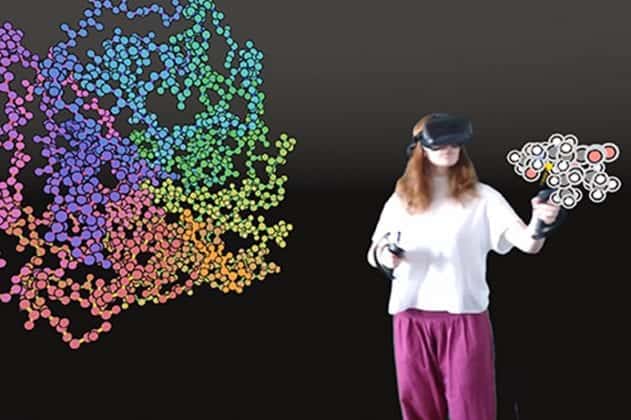Virtual Reality for Designing Drugs – University of Bristol Researchers
Bristol researchers are using virtual reality (VR) to design drugs.
To design the next generation of drug treatments, researchers from the University of Bristol are pioneering the use of virtual reality (VR) as a tool to design drugs.
The journal PLOS One published this study’s findings.
Discovering new drugs involves the need to find molecules that can bind to biological targets such as proteins, and many drugs are small molecules.
Using interactive molecular dynamics simulations in VR (iMD-VR), users were able to use VR to ‘step inside’ proteins and manipulate them, and the drugs binding to them, in atomic detail in this study.
Researchers were able to predict accurately how the drugs bind and ‘docked’ drug molecules using this iMD-VR approach. Drugs for HIV and flu were among the systems studied in this research.
The co-lead of the study from the University of Bristol’s Centre for Computational Chemistry, Professor Adrian Mulholland said, “The working of many drugs involves stopping the proteins from working by binding to them. For instance, a drug can stop a virus from reproducing by binding to a particular virus protein.”
In the protein, a small molecule drug needs to fit snugly in order to bind well to the protein. Finding small molecules that bind tightly to specific proteins is an important part of drug discovery and understanding what makes them bind tightly helps in designing better drugs.
Understanding how drug molecules fit into their biological targets is required for the researchers to design new therapies. To understand this, we represent them as fully three-dimensional objects using VR. To discover how they fit in, users can then fit a drug within the keyhole of a protein binding site.
The task for the users in this study was to bind drugs to protein targets such as HIV protease and influenza neuraminidase.
It was seen from the tests that predicting how the drugs bind to their protein targets could be done correctly by the users. Just like the structures of the drug complexes found from experiments, users could build similar structures by pulling the drug into the protein.
Docking drugs into the proteins were effectively done even by non-experts. Using interactive VR to predict accurately how new potential drugs bind to their targets proved to be efficient from this study.
In structure-based drug design, this study shows how VR can be used effectively even by non-experts and it can be applied by anyone as it uses readily available VR equipment and an open-source software framework.
“The drugs and their protein targets being fully flexible is an important aspect of this work. To find how drugs interact with their biological targets, we model their structural changes and dynamics and the users can manipulate them interactively. To model drug binding, this is a really powerful and exciting way. The results are accurate and we have proved that in this work. In the design and development of new drugs, these tools will be very beneficial.”
In less than five minutes of real-time, users could achieve the complete rebinding and unbinding events generated using iMD-VR.
All the participants were able to establish a docking pose and the non-expert users had trace atoms showing them the correct pose.
Binding poses had more variation where no trace atoms were present, yet, for all three systems, the same range of the accepted bound position could be obtained by the users. Within a single hour-long training session demonstrating the usability of this VR framework with each participant, these results were achieved.

